Parameter Optimization and Experimental Study of Jet Mixing Device Based on CFD
Abstract
:1. Introduction
2. Theoretical Analysis of Jet Mixing Device
2.1. Working Process and Structural Parameters
2.2. Device Performance Evaluation Index
2.2.1. The Ejector Performance
2.2.2. The Flow Field Characteristics
3. Numerical Simulation Calculation and Test Method
3.1. Model Description and Simulation Parameters
3.1.1. Grid Type and Subdivision Method
3.1.2. Solver Parameter and Boundary Condition Setting
3.1.3. Theoretical Verification of Numerical Solutions
3.2. Jet Mixing Effect Test
3.2.1. Fog Droplet Size Test
3.2.2. Diameter Size Test of Injected Bubbles
4. Numerical Simulation Results and Discussion
4.1. Influence of Parameters on Reagent Suction Performance
4.2. Influence of Parameters on Flow Field
4.2.1. Pressure Field Analysis
4.2.2. Velocity Field Analysis
4.2.3. Turbulence Intensity Distribution
5. Experimental Results and Discussion
6. Conclusions
- (1)
- In this paper, a jet stirring combined device of coal slime floatation and mixing (China Patent, ZL2015108627218) is proposed. The main function of the jet mixing device is to realize the full mixing of reagent, air bubbles and coal slurry. The main function of the stirring apparatus is to keep the multiphase particles suspended in the mixing tank. The test of the jet mixing effect and diameter size migration law of injected bubbles show that the design idea of this device is correct.
- (2)
- Considering the suction performance, when the area ratio , the throat-nozzle distance , the suction tube is located at 1/4 ~1/2 position on the left side of the nozzle outlet and is symmetrically arranged, and the length of the throat tube is 6~12, the suction performance of the jet mixing device is the best. The nozzle outlet velocity can effectively improve the injection capacity, but the increase in velocity will cause a loss of energy. Each jet mixing device has the optimal pressure ratio and flow ratio coordination, and the mixing efficiency is the highest when the velocity is 18m/s.
- (3)
- According to the flow field distribution characteristics in the device, the area ratio has a more significant effect. If the area ratio is larger, the turbulence intensity around the flow core is larger, the pressure drop in the throat tube is faster, the flow core also disappears faster; and the mixing between the working fluid and the injection fluid is more favorable. The throat-nozzle distance has little effect on the flow field distribution. When the throat-nozzle distance is less than 0.2, the flow core is longer, which is unfavorable to fluid mixing. The optimal throat-nozzle distance is 0.3~0.6. The outlet area of the nozzle (0~) directly opposite the suction tube is the most ideal, which is conducive to kinetic energy exchange between the working fluid and the ejector fluid in the throat tube. The suction tube is arranged symmetrically on both sides, and its turbulence intensity image is highly symmetrical, which is conducive to momentum exchange and mass mixing between the working fluid and the injection fluid in the throat tube. When the throat tube length L is greater than 9, the turbulent region does not increase. Considering the mixing characteristics of the flow field, the throat tube length should be greater than 9. Under different nozzle exit velocities, the velocity of each point in the cross section below the middle part of the throat tube (greater than 10) tends to be consistent, indicating that the mixing of working fluid and injection fluid can be completed in a limited length of the throat tube, independent of the nozzle outlet velocity.
- (4)
- According to the fog droplet size test, the dispersion effect is the best when the area ratio , that is, when the area ratio , the flow field distribution characteristics are the most ideal, providing the best conditions for the dispersion of the injection fluid in the working fluid. According to the diameter size test of injected bubbles, under the optimized parameters of the jet mixing device, the single bubbles will be instantly crushed into small diameter size and a large number of bubbles. More than 90% of bubbles were smaller than 45μm under the synergistic action of foaming agent.
Author Contributions
Funding
Institutional Review Board Statement
Informed Consent Statement
Data Availability Statement
Acknowledgments
Conflicts of Interest
References
- Güney, A.; Nal, G.; Ergut, M. Beneficiation of fine coal by using the free jet flotation system. Fuel Process. Technol. 2002, 75, 141–150. [Google Scholar] [CrossRef]
- Deng, X.W.; Liu, J.T.; Wang, Y.T.; Cao, Y.J. Velocity distribution of the flow field in the cyclonic zone of cyclone-static micro-bubble flotation column. Int. J. Min. Sci. Technol. 2013, 23, 89–94. [Google Scholar] [CrossRef]
- Gong, M.; Li, C.; Li, Z. Numerical analysis of flow in a highly efficient flotation column. Asia-Pac. J. Chem. Eng. 2015, 10, 84–95. [Google Scholar] [CrossRef]
- Wang, A.; Yan, X.; Wang, L.; Cao, Y.; Liu, J. Effect of cone angles on single-phase flow of a laboratory cyclonic-static micro-bubble flotation column: PIV measurement and CFD simulations. Sep. Purif. Technol. 2015, 149, 308–314. [Google Scholar] [CrossRef]
- Shen, X.; Chen, Q.; Li, S. Velocity and pressure distributions characteristics of coal slurry in floatation cyclone. Procedia Earth Planet. Sci. 2009, 1, 814–818. [Google Scholar]
- Chen, W.-Y.; Wang, J.-B.; Jiang, N.; Zhao, B.; Wang, Z.-D. Numerical simulation of gas-liquid two-phase jet flow in air-bubble generator. J. Cent. South Univ. Technol. 2008, 15, 140–144. [Google Scholar] [CrossRef]
- Hacifazlioglu, H. Enrichment of Silica Sand Ore by Cyclojet Flotation Cell. Sep. Sci. Technol. 2014, 49, 1623–1632. [Google Scholar] [CrossRef]
- Salem-Said, A.H.; Fayed, H.; Ragab, S. Numerical Simulations of Two-Phase Flow in a Dorr-Oliver Flotation Cell Model. Minerals 2013, 3, 284–303. [Google Scholar] [CrossRef] [Green Version]
- Tasdemir, T.; Tasdemir, A.; Oteyaka, B. Gas entrainment rate and flow characterization in downcomer of a Jameson cell. Physicochem. Probl. Miner. Process. 2011, 47, 61–78. [Google Scholar]
- Ma, J.; Qiu, B.J.; Yan, R.; Zhu, B.F. Study on the Working State of Jet-Mixing Apparatus. Appl. Mech. Mater. 2014, 563, 219–223. [Google Scholar] [CrossRef]
- Dörpmund, M.; Cai, X.; Walgenbach, M.; Vondricka, J.; Schulze Lammers, P. The Challenge of Cleaning Direct-Injection Systems for Pesticide Application. Trans. ASABE 2012, 55, 1643–1650. [Google Scholar] [CrossRef]
- Ni, C.; Jin, M.; Chen, Y.; Xie, G.; Peng, Y.; Xia, W. Improving the Recovery of Coarse-Coal Particles by Adding Premineralization Prior to Column Flotation. Int. J. Coal Prep. Util. 2016, 37, 87–99. [Google Scholar] [CrossRef]
- Lin, L.I.; Liu, J.; Wang, L.; Hesheng, Y.U. Numerical simulation of a self-absorbing microbubble generator for a cyclonic-static microbubble flotation column. Int. J. Min. Sci. Technol. 2010, 20, 88–92. [Google Scholar]
- Wang, L.; Jia, Y.; Yan, X.; Zhou, C. Gas–liquid numerical simulation on micro-bubble generator and optimization on the nozzle-to-throat spacing. Asia-Pac. J. Chem. Eng. 2016, 10, 893–903. [Google Scholar] [CrossRef]
- Yang, R.Q.; Wang, H.F.; Liu, J.C. Jet Flotation Column System Structure Design and Numerical Simulation of Two-Phase Flow. Adv. Mater. Res. 2013, 616–618, 655–661. [Google Scholar] [CrossRef]
- Taşdemir, A.; Taşdemir, T.; Öteyaka, B. The effect of particle size and some operating parameters in the separation tank and the downcomer on the Jameson cell recovery. Miner. Eng. 2007, 20, 1331–1336. [Google Scholar] [CrossRef]
- Vondřička, J. Study on the Process of Direct Nozzle Injection for Real-Time Site-Specific Pesticide Application; Rheinische Friedrich-Wilhelms-University: Bonn, Germany, 2008. [Google Scholar]
- Xu, X.C.; Qiu, B.J.; Deng, B.; Jia, F.W. Analysis on Online Mixing Performance of Jet-Mixing Apparatus. Adv. Mater. Res. 2011, 347–353, 417–421. [Google Scholar] [CrossRef]
- Jing, M.; Qiu, B.; Yan, R. Simulated Analysis of the Mixing Performance of Jet-mixing Apparatus. In Proceedings of the 2015 International Conference on Intelligent Systems Research and Mechatronics Engineering, Zhengzhou, China, 11–14 April 2015. [Google Scholar]
- Xu, Y.; Wang, X.; Zheng, J.; Zhou, F. Simulation and experiment on agricultural chemical mixing process for direct injection system based on CFD. Trans. Chin. Soc. Agric. Eng. 2010, 26, 148–152. [Google Scholar]
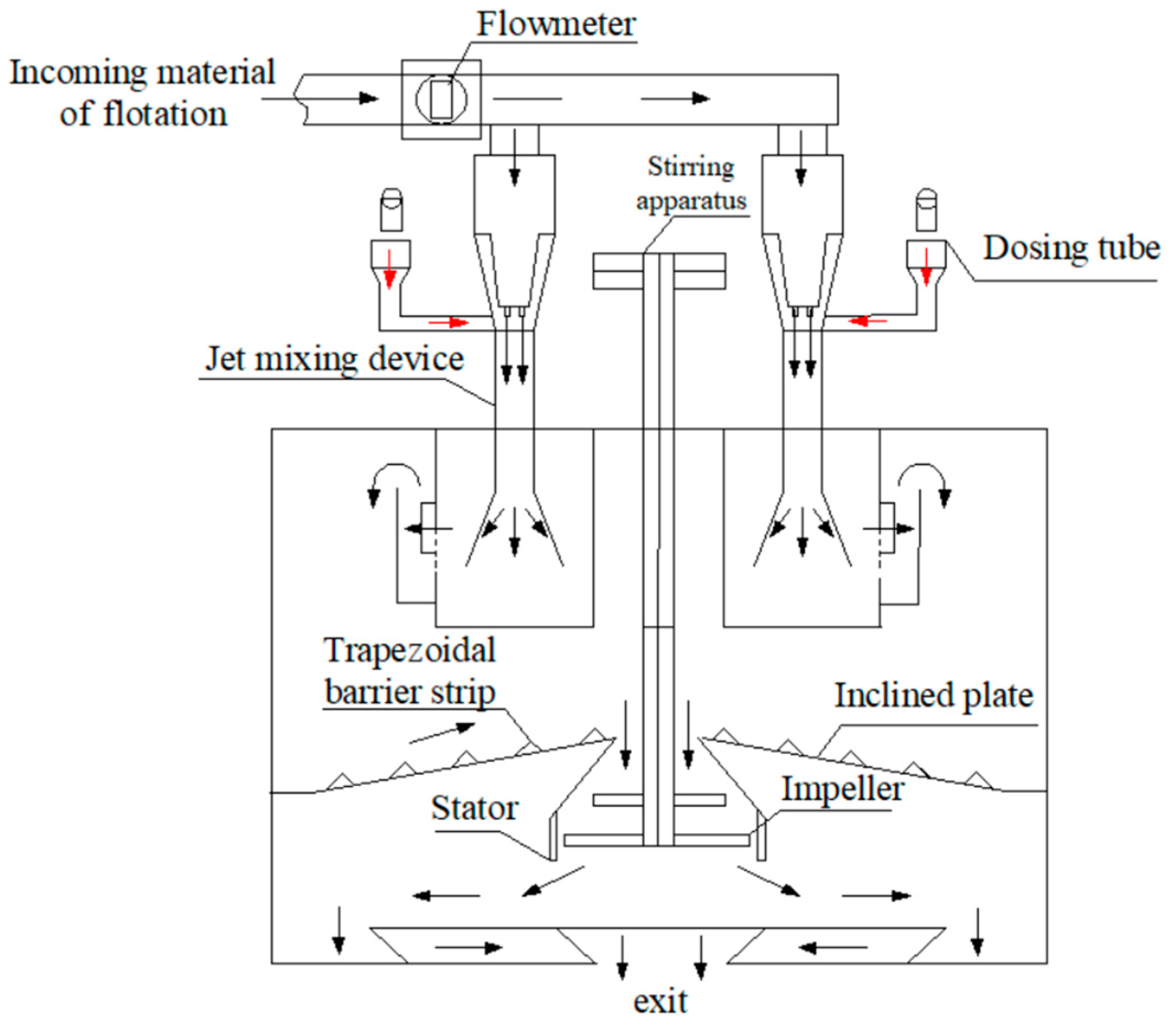
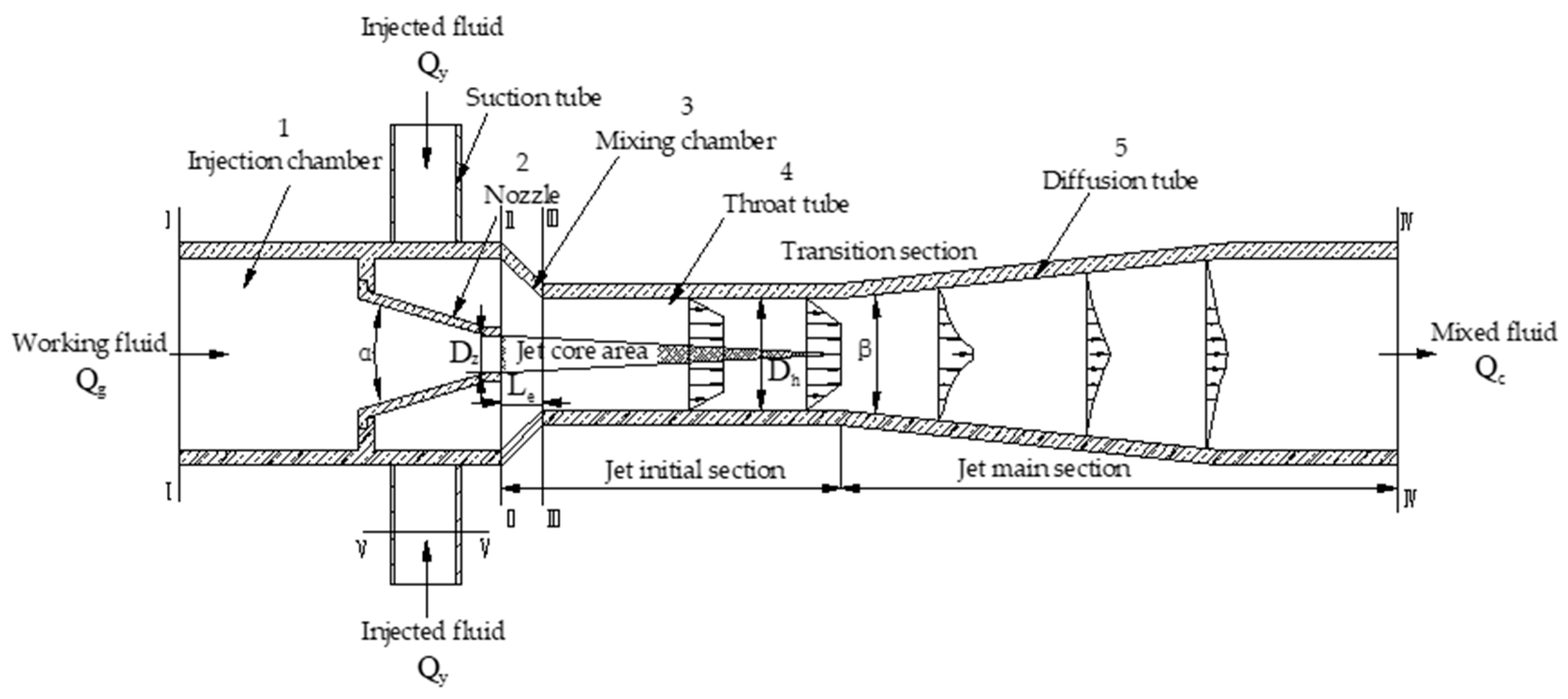

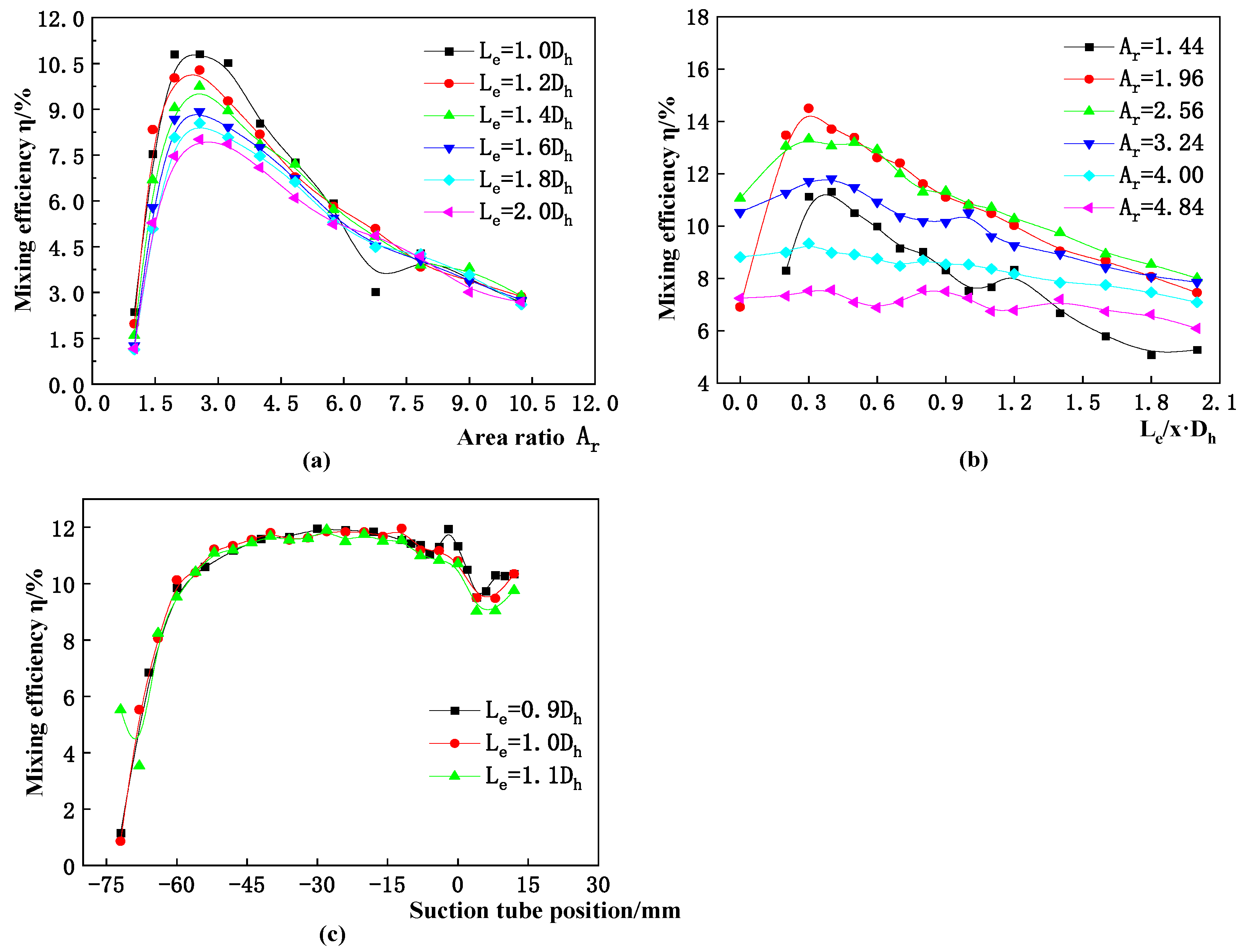
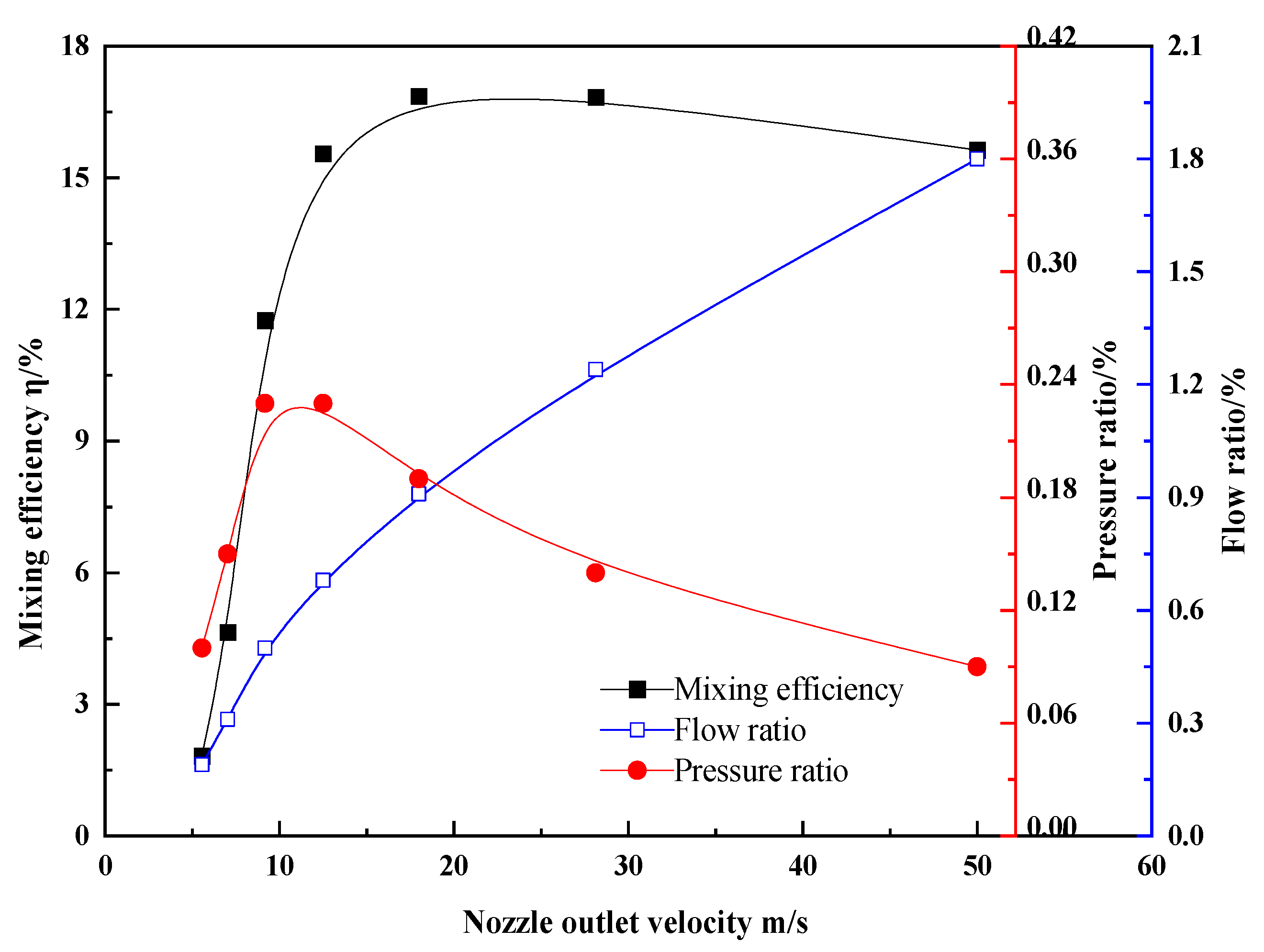




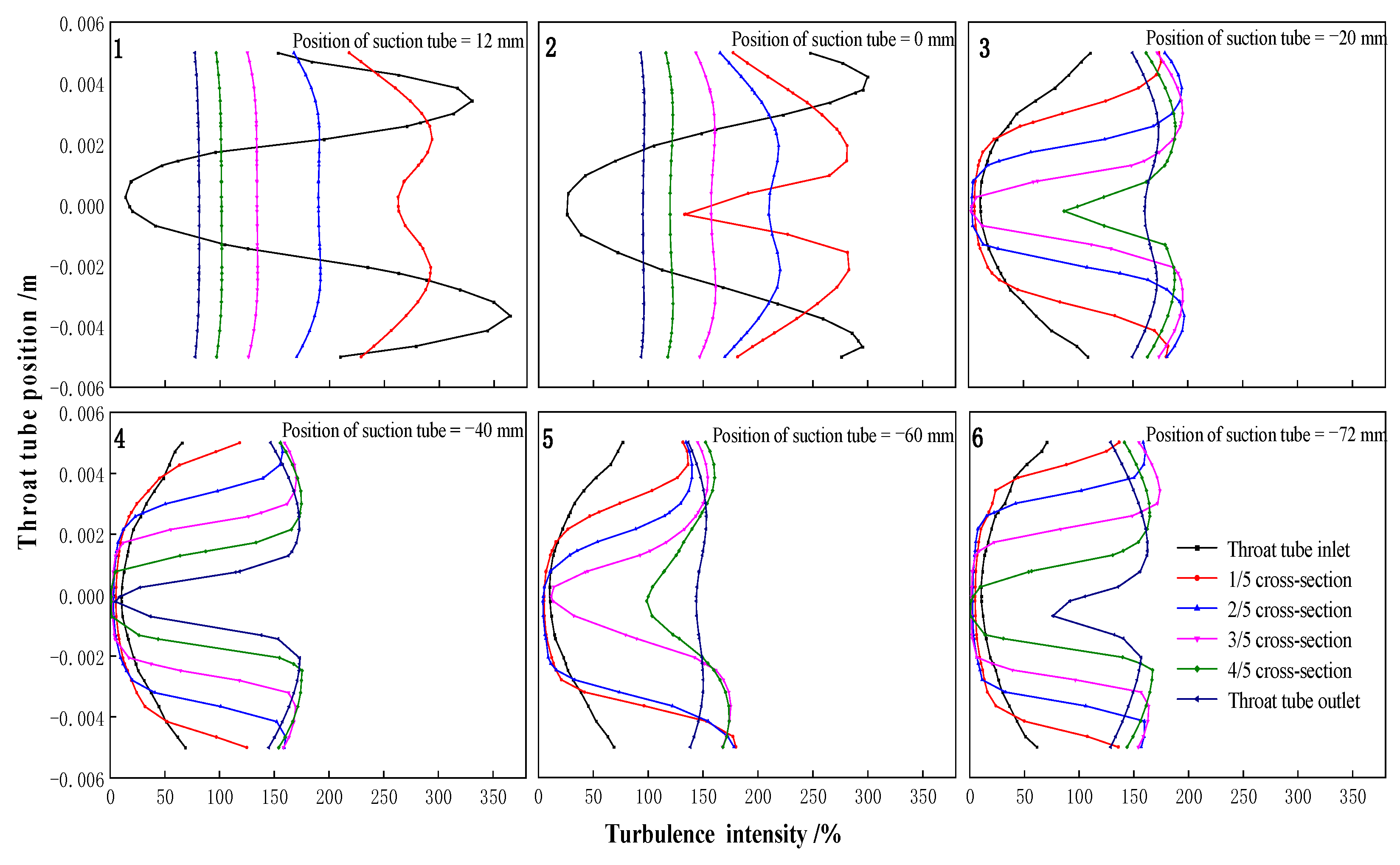



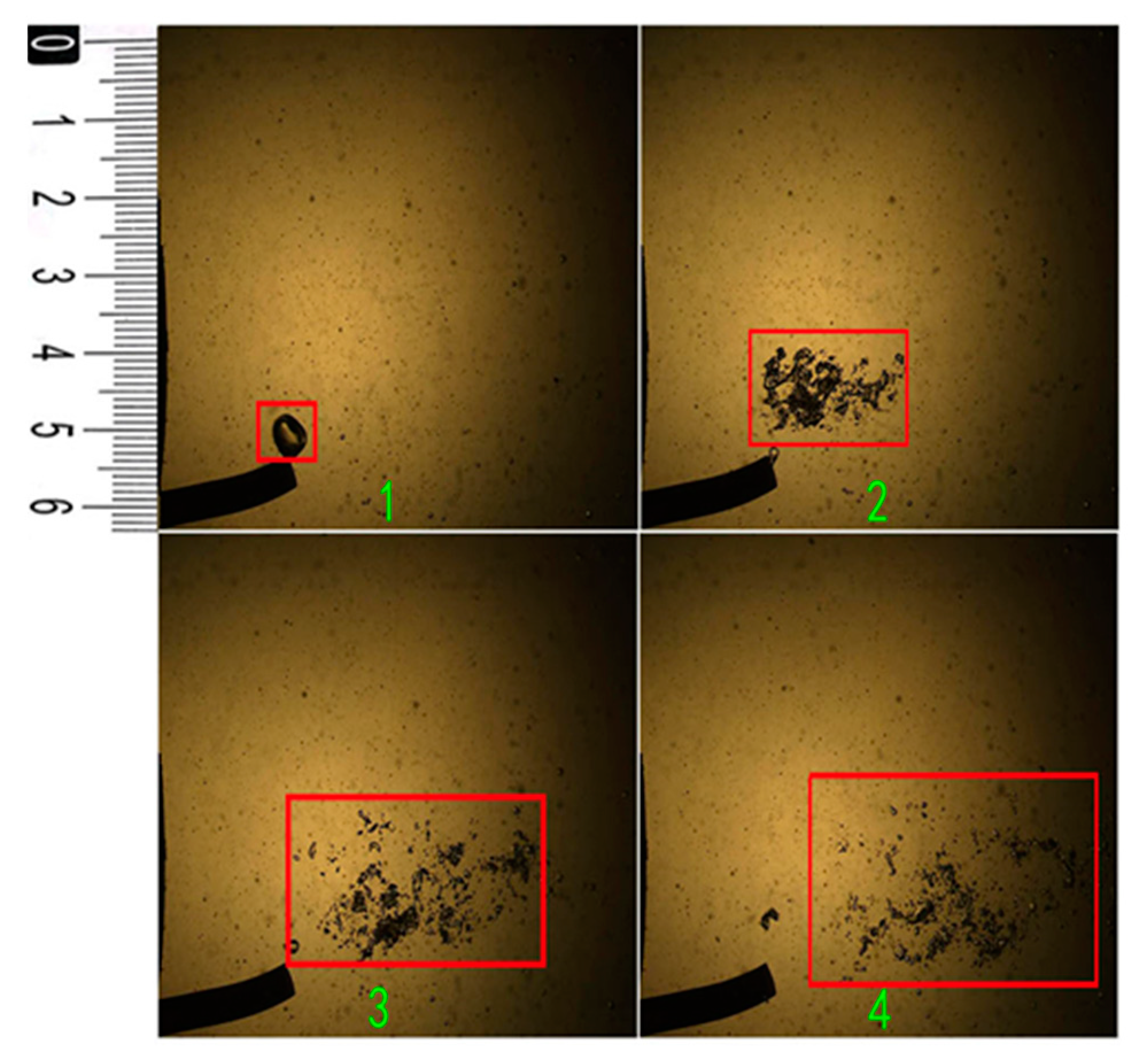
| Scheme | Nozzle Diameter Dz/mm | Throat Tube Diameter Dh/mm | Throat-Nozzle Distance Le/mm | Position of Suction Tube Inlet |
|---|---|---|---|---|
| Area ratio optimization | = 10 mm | (n = 0, 1 … 10, 11) | (N = 0, 1 … 4, 5) | middle |
| Throat-nozzle distance optimization | = 10 mm | (n = 1, 2 … 5, 6) | (N = 1, 2 … 9, 10) | middle |
Publisher’s Note: MDPI stays neutral with regard to jurisdictional claims in published maps and institutional affiliations. |
© 2022 by the authors. Licensee MDPI, Basel, Switzerland. This article is an open access article distributed under the terms and conditions of the Creative Commons Attribution (CC BY) license (https://creativecommons.org/licenses/by/4.0/).
Share and Cite
Zhou, W.; Wang, S.; Zhu, J.; Xie, J.; Cai, C. Parameter Optimization and Experimental Study of Jet Mixing Device Based on CFD. Processes 2022, 10, 933. https://doi.org/10.3390/pr10050933
Zhou W, Wang S, Zhu J, Xie J, Cai C. Parameter Optimization and Experimental Study of Jet Mixing Device Based on CFD. Processes. 2022; 10(5):933. https://doi.org/10.3390/pr10050933
Chicago/Turabian StyleZhou, Wei, Shujie Wang, Jinbo Zhu, Jun Xie, and Chuanchuan Cai. 2022. "Parameter Optimization and Experimental Study of Jet Mixing Device Based on CFD" Processes 10, no. 5: 933. https://doi.org/10.3390/pr10050933
APA StyleZhou, W., Wang, S., Zhu, J., Xie, J., & Cai, C. (2022). Parameter Optimization and Experimental Study of Jet Mixing Device Based on CFD. Processes, 10(5), 933. https://doi.org/10.3390/pr10050933





